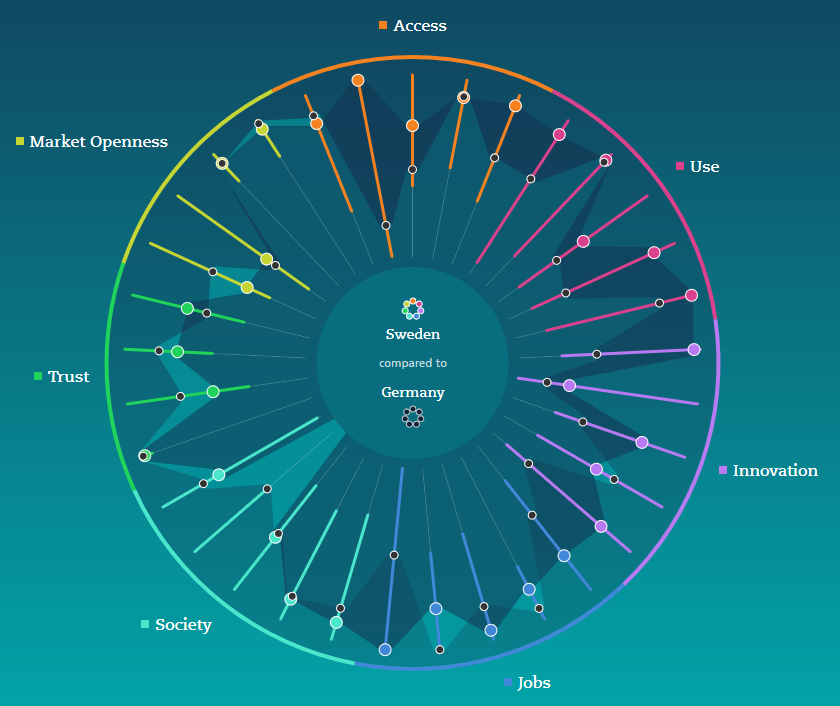Before traveling to Sweden this February, in order to teach at the University of Malmö, I had made an online purchase in my hometown in Germany and paid via Klarna. Klarna is a “Bank” that advertises with the slogan “Buy now and pay later” without interest and fees. I could use its services although I don’t even have an account there. It is considered an innovative company that has “taken online shopping by storm over the last couple of years“. And it’s a company that comes from Sweden. Although these two events: me buying via Klarna and traveling to Sweden were unrelated, it made me ask:
What is it that makes Sweden so successful in the digital transformation? Here are my 3 top takeaways from the Swedish trip:
Cashless Country
Sweden is clearly on its way to a cashless society. Most of the stores, cafes, and restaurants don’t accept cash and ask the clients for understanding. Just like Klarna made my online transaction feel smoother, there was a certain comfortability of paying by card everywhere. I didn’t have to worry about having enough cash on me or to hassle with coins. Luckily I only spent my money on coffee and food, so I wasn’t thinking too much about how much I am spending. In order for this cashless principle to work, you have to develop strategies for having a financial overview (or have the right digital tool) as well as alternative tools in case your card leaves you hanging (like it happened to me due to a problem with the chip).
Digital Strategy
Sweden has not only decided to aim at becoming a leading country in the use of digital opportunities, as its 2017 Digital Strategy says, it consequentially works towards achieving these goals. A tool developed by the OECD gives a visual overview of trends and policies as well as opportunities and challenges to various areas like innovation, jobs, skills, and work in the digital economy. By using the tool I compared Sweden to Germany and came to the following result:

Source: https://goingdigital.oecd.org/en/ (Stand 10.02.2020)
The dots in color represent Sweden and the black dots represent Germany. The higher the score (dot towards the outer circle) the higher the degree of digitalisation.
In general, Sweden seems to be more digitally advanced when compared to Germany. When it comes to jobs and education, Sweden follows a policy of lifelong learning that has the whole labor force in mind, while Germany seems to focus mainly on (young) STEM graduates. Sweden has the following scores: 77 score points in the category of STEM graduates, 100 score points in public spending on active labor market policies and 95 score points in the category of workers receiving training. Germany instead has 100, 48 and 81 respectively.
Wider digital Inclusion
It thus seems as no surprise that “the digital divides along lines of age, education, income, and firm size are narrower than in most OECD countries“.
According to my colleagues and students at the University of Malmö digitalisation in Sweden facilitates access to public services and contributes to reducing discrimination. However, they also express a concern of losing the “human touch” in a society which relies completely on digital decision-making. One colleague put it like this:
“when you’re unable to contact the public service either personally or by telephone and can only talk to bots, you tend to prefer the German way with its paper-forms and personal meetings“.
Top Foto: private




Leave a Reply